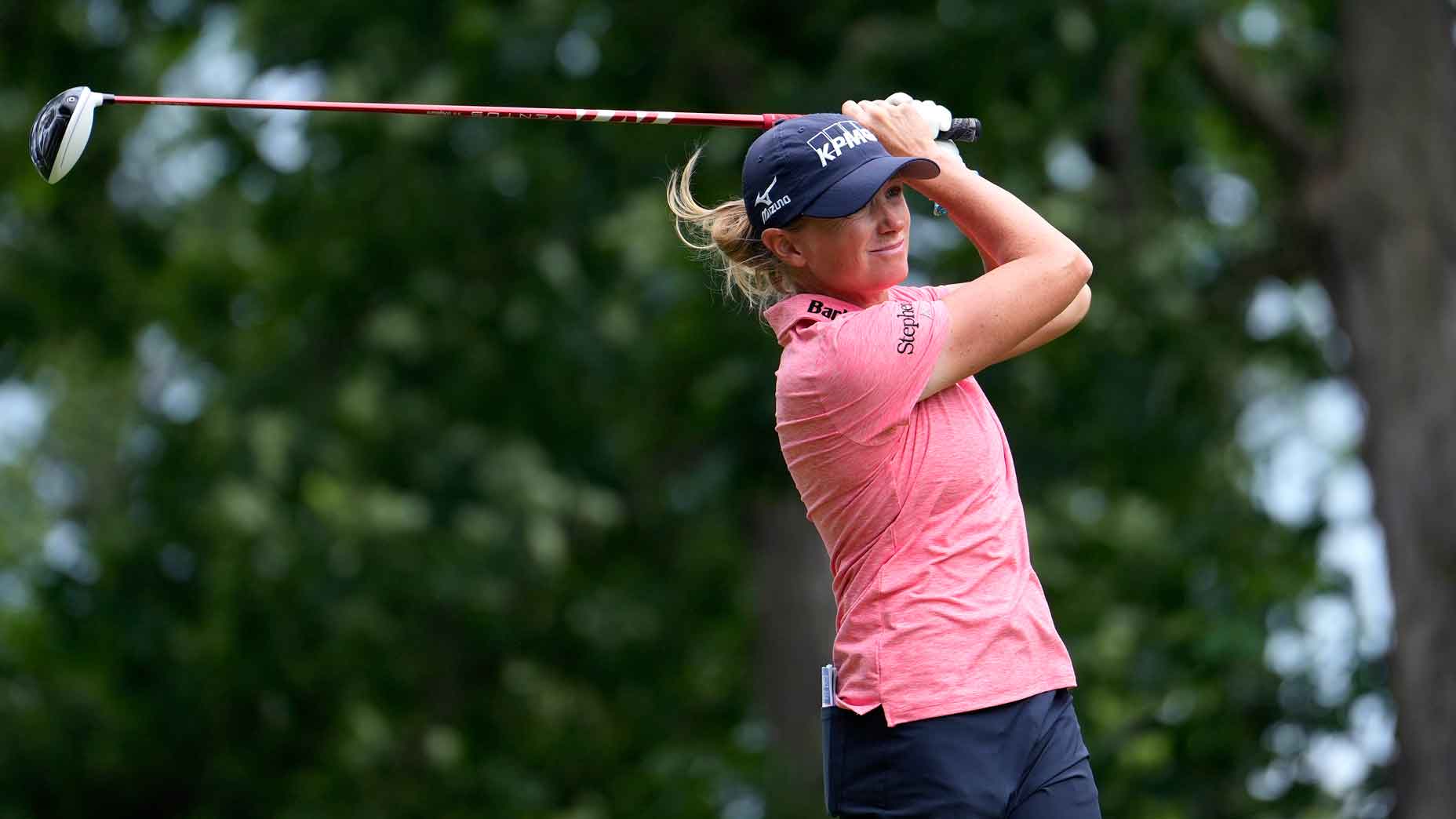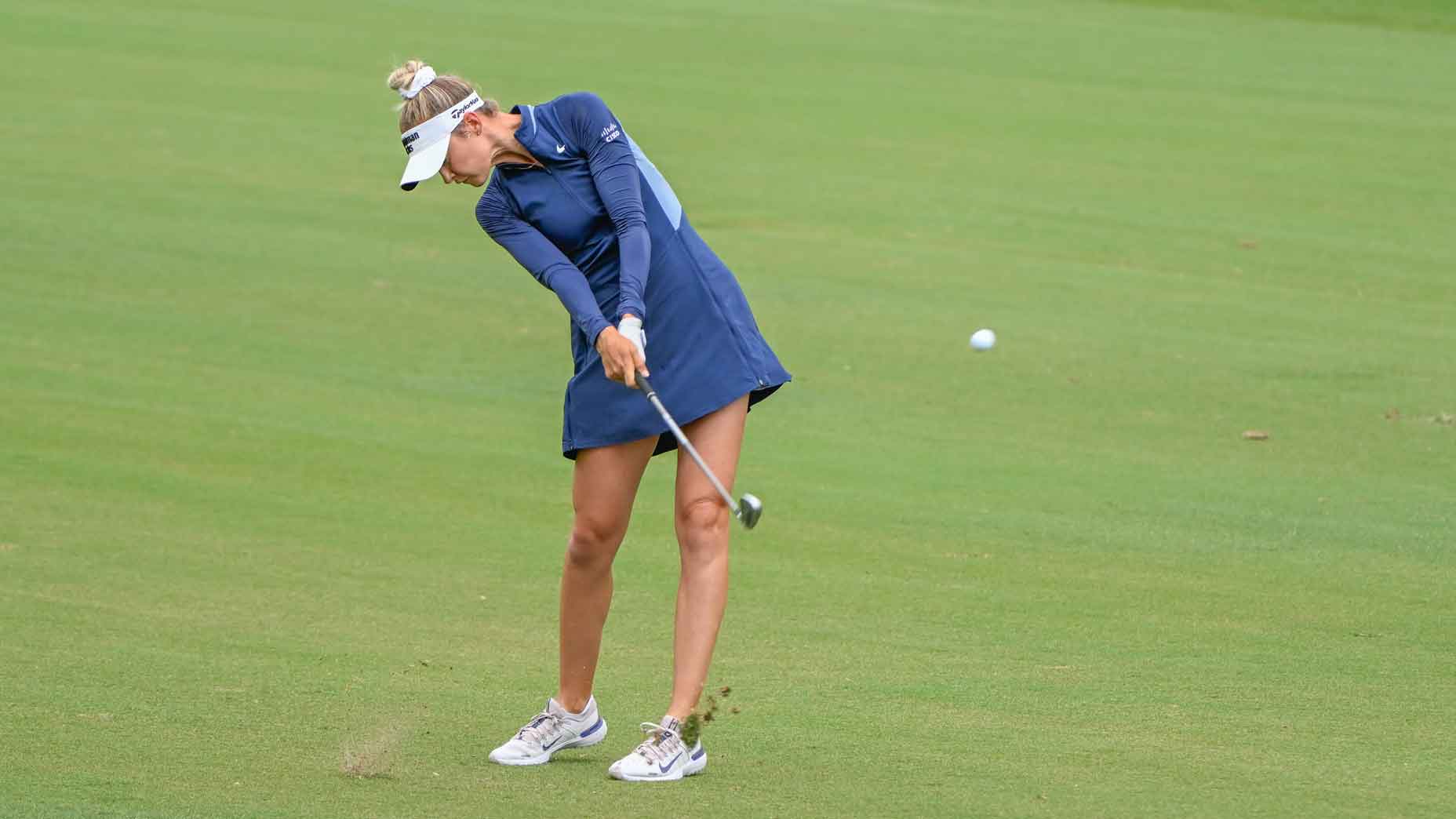At the KPMG Women’s PGA Championship, women’s golf is elevated in tangible ways

Stacy Lewis hits a shot at the 2024 Meijer LPGA Classic.
Getty Images
As one of the longest-tenured active players in the women’s game, Stacy Lewis holds a lot of clout. The 39-year-old former World No. 1 has 13 victories on her resume, including two major championships, and will captain the U.S. Solheim Cup team for the second time this year.
Lewis has been around long enough to have a valuable perspective on the growth of women’s golf. And as a longtime KPMG ambassador, she was an integral figure in the plans to elevate the LPGA Championship into what is now the KPMG Women’s PGA Championship, which celebrates its 10th edition at Sahalee Country Club in Sammamish, Wash., this week.
“KPMG has picked my brain over the years how we can get better and what do we need to do to enhance the championship,” Lewis said Tuesday. “Everything I said they did and continue to do. So it’s been a great partnership for me personally and a tremendous partnership for the Tour.”
Tremendous indeed. KPMG’s involvement has elevated the championship in numerous ways: staging the tournament at top-notch venues, increasing purse sizes and introducing new technology innovations. The KPMG Performance Insights technology platform launched in 2021, enabling players to have access to full-field, shot-level data, advanced analytics, and statistics such as strokes gained, proximity averages, and performance indexing.
This year, KPMG not only raised the championship purse to $10.4 million (a $400,000 increase), but also introduced Champcast, presented by T-Mobile, which will feature 3D imagery, radar data, shot trails, green views and individual shot video highlights, enhancing the fan experience with access to this real-time data.
For Lewis, there is satisfaction in witnessing the evolution of the women’s game, where tournaments run like the KPMG Women’s PGA Championship are becoming more of the norm than the exception.
“It’s funny. It’s amazing to watch,” Lewis said. “The players that have been on tour maybe seven or eight years, they expect this at major championships. They expect to walk out and see the big tents and see the golf course perfect. Fifteen years ago, that was not the case. We were getting on venues that just hopefully wanted to have us and maybe they didn’t shut down the golf course ahead of time and there were divots everywhere. You got what you got basically. So just I think you feel important when you walk on property, and that’s something that the new players haven’t had to worry about that those of us that been out here a little longer had to worry about.”
Women’s golf is in a great place at the moment, with the LPGA attracting investment from several big-name sponsors in recent years.
“You’ve got Ally, Chevron, AIG, KPMG, Ford. You got some really great, I mean, top companies supporting us that we didn’t have ten years ago,” Lewis said. “I think just those companies seeing the value of working with us and wanting to bring their customers and their people they do business with out to have this experience to wine and dine and make it a great experience for them. That’s ultimately what we’re trying to do here.”
It goes without saying that the lifeblood of the LPGA is the players themselves — something Lewis is keen not to overlook.
“The quality of golf is so good now. I mean, so good. Like just the talent from top to bottom. It’s harder than ever to win,” she said. “That’s what makes Nelly’s run so much more impressive, is how good everybody is now. You can walk that range and the ball striking is off the charts.”
Given all the progress of the last decade, what’s next for the LPGA? Lewis said it’s getting progressively harder to top each year’s good news.
“Every time there is an announcement it’s kind of like in my head I’m like, okay, what are they going to do next year to top this?” Lewis said. “We’ve made a lot of strides in ten years since this championship started. I’m excited to see where we go.”














